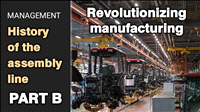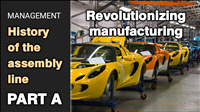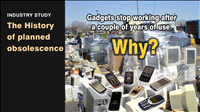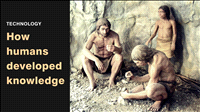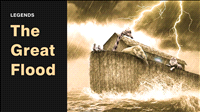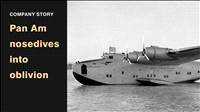Vance Packard | The man who exposed advertising hype and planned obsolescence
By Kiron Kasbekar | 20 Feb 2023
I am Sheetal Gaikwad, and the video I’ve got for you today is a brief discussion on a man who exposed advertising hype and the planned obsolescence encouraged by companies, which are forever trying to sell stuff to us, whether we really need that stuff or not.
But before I start on that, one request.
I hope you’ve seen our earlier videos and liked them. Please subscribe to the Business History channel, if you have not done so already. Do also click on the ‘like’ button below. And if you liked the video, please share this link with your friends.
I also hope you will watch the entire length of this video. Now let me get back to it.
With the advance of knowledge and the availability of new technologies that help us do quick online searches, compare features and prices, and buy exactly what we should be buying, you’d think that we, the customers, are the most powerful people in the world.
If you thought so, you’d be wrong.
We, or at least most of us, most of the time, are led by our noses to do what companies want us to buy instead of what would be good for us to buy (or simply refrain from buying any of it altogether).
I am not saying anything new. People like Vance Packard have written several books warning us about the insidious ways in which companies tempt us, woo us, entice us, and usually persuade us to buy what they want us to buy, regardless of whether we need it or not.
Packard’s book The Hidden Persuaders, published in 1957, exposed the ways in which advertisers persuade people to buy more and more things irrespective of whether they really need those things or not. That book would change the way people saw advertising and the power of persuasion in American culture.
The book surely influenced many people to reduce their avoidable spending. But, sadly, the world economy, and especially the American economy, was growing rapidly. And people soon forgot all thoughts of limiting their spending to things they really needed. They were buying more and more things the advertisers wanted them to buy. Just because those things were advertised as the smart thing to have.
Packard’s books were published in the 1960s. More than a half century ago, they exposed the ways companies employ to boost their profits at our expense. You’d have expected most people to have become wiser, and to have learned to refrain from buying things they didn’t really need to buy.
Like buying that additional shirt you shouldn’t have purchased since your clothes shelves already had several shirts you’d never worn. Or like acquiring the latest gadget you saw in the shop display, even when your existing gadget was working just fine.
Packard wrote The Hidden Persuaders soon after America became undisputed leader of the Western world, replacing the older powers, such as a war-weary and economically depleted Britain and the completely battered Germany, Japan and France.
Not only did the American economy now completely dominate a war-weary world, its military had gained great strength, and held sway over the Western world. Hollywood brought America cultural leadership too. If things were still a bit blurred, in 1956, with the Suez crisis, the world finally realized that the US was the undisputed leader of the West.
The crisis was created first by Israel, and then Britain and France, invading Egypt with the aim of removing Egyptian president Gamal Abdel Nasser from power after he nationalized the Suez Canal, which had hitherto been controlled by the foreign- (primarily British- and French-) owned Suez Canal Company. The US, the Soviet Union and the United Nations put pressure on the three invaders to withdraw. That was the final nail in the coffin of the British Empire.
But let’s get back to the American economy.
The US economy was out of depression thanks to wartime production. And American adults found a great deal more spending power in their hands. There were plenty of jobs, wages were higher, and, after being starved of consumer goods during the war, Americans were dying to spend.
Dying to spend on TV sets, cars, vacuum cleaners, refrigerators, washing machines, toasters, and other durables that would help them ‘modernize’ their lives. In the five years from 1945 and 1949, Americans bought 20 million refrigerators, 21.4 million cars, and 5.5 million stoves.
The US population had grown from 140 million to 149 million in those five years. And, assuming an average family size of 3.5 persons, it meant that half the US population owned cars purchased in that 5-year period. And they owned many other consumer durables.
But they continued wanting to buy more. And more. And more. Why? Because the companies that made those products – the advertisers – told them they needed to do so. Why use a three-year-old car when you can get a brand new one with shinier trim, and make your neighbor squirm in envy?
During the same years, many young families were persuaded to buy their own homes, more often than not located in rapidly expanding suburbs. More people living in the suburbs and working in the cities meant that more people needed cars, besides the additional household appliances they needed in their new homes.
The American consumer began to be praised as a patriotic citizen in the 1950s for contributing to the success of the so-called American way of life. As one historian, Lizabeth Cohen, wrote, ‘economic recovery after a decade and a half of depression and war depended on a dynamic mass consumption economy’.
This was the scenario in which American journalist and social critic Vance Packard wrote his books.
Vance Oakley Packard was born in 1914 in Pennsylvania, and grew up in rural New York state. He attended Pennsylvania State University, where he studied journalism, and later worked as a newspaper reporter and magazine writer. In the 1950s, he began to write about the ways in which consumers were being influenced by advertising and marketing.
Packard’s father managed a dairy farm owned by the Pennsylvania State College (which was later renamed Penn State University). So it was natural for him to identify himself as a ‘farm boy’ all his life, even though in later life he lived in affluent areas.
In 1937, after a stint with a local newspaper, the Centre Daily Times, Packard joined the Boston Daily Record as a staff reporter. Soon afterwards he was hired as a reporter by the Associated Press, and in 1942, he was appointed a section editor of The American Magazine, where he later became a staff writer. After The American Magazine shut down in July 1956, Packard joined Collier's as a writer. By the end of that year, Collier's closed down.
Packard had clearly had enough of jobs. So he devoted all his time attention to writing books based on his earlier research and experience.
Packard’s first book, The Hidden Persuaders immediately drew national attention. And that encouraged him to devote all his time to write and lecture on various social ills. He became a staunch critic of consumerism, which, for him, was like an attack on American traditions.
Packard was not the first critic of consumerism in America. In 1899, Thorstein Veblen published a book on consumerism, called The Theory of the Leisure Class, in which he examined the values and institutions that went with the so-called leisure time that was growing at the beginning of the 20th century.
In the book, Veblen criticized conspicuous and vicarious consumption and waste, which had become a part of the spending habits of this leisure class. He pointed out that the spending was driven more by a desire to display status rather than by the functionality or usefulness of the consumption.
Money is taken out of the consumer’s pocket and handed over to the company. The consumer gets something of dubious value. The company makes a neat profit.
Vance Packard was following in the footsteps of people like Veblen. In the 1950s and 60s, advertising was booming in America. Companies were using new techniques to promote their products and create a demand for them.
Packard’s books, which included The Hidden Persuaders, The Waste Makers, The Status Seekers, and The Naked Society, warned Americans in the late 1950s and 1960s about the excesses of advertising, planned obsolescence, and status seeking.
So what were the excesses Packard exposed in his book?
Packard exposed various techniques used by advertisers, including what is known as ‘subliminal messaging’, as ‘psychological profiling’, and the creation of brand loyalty.
Vance Packard believed that consumers were often irrational, and susceptible to manipulation by advertisers and marketers. He argued that people were not always aware of the factors that influenced their purchasing decisions, and that they often bought goods that they did not really need.
One of the most controversial techniques Packard wrote about was subliminal messaging. Advertisers would use hidden messages in their ads that would bypass the conscious mind and influence behavior on a subconscious level.
The Hidden Persuaders caused a stir when it was published. It was a bestseller, and it led to a national debate about the ethics of advertising. Packard went on to write several other books on similar topics, such as The Waste Makers and The Naked Society. He continued to be a vocal critic of corporate influence in American life.
Packard’s work continued to shape the national conversation about advertising and consumer culture for years after his books were published.
Packard’s work is just as relevant today as it was in the 1950s and 60s. In fact, his critiques of consumer culture are even more important now, as we live in a world that is saturated with advertising and corporate messaging.
These days at least some younger people in some countries have become more conscious about wasteful expenditure and about the environment. As a result we have seen the growth of a culture of using public transport where possible, and of using bicycles for commuting, something that had become a thing of the past.
But I don’t know how this trend will grow or whether it will even continue – though I have a feeling that with the worsening energy crisis and growing environmental crisis, there is a good chance that it will continue.
But, more than anything else, the world will need much less energy if we simply reduce wasteful expenditure. Not only will doing that help us conserve our resources, it will also reduce the terrible pressure humanity has put on Nature.
Well, that brings me to the end of this video. But before we end, I’d like to draw your attention to some links in the description below to books mentioned in this video. These links will take you directly to a place where you can buy the books.
Do write your comments in the space below about what you think about this video.
Do also watch this place for more videos. And tell your friends and colleagues too!
And, if you have not already subscribed to the Business History channel, please do so; for then you will be alerted every time we upload a new video here.
Do also visit our website, bh.domain-b.com to get a lot more content on business history, including lists of books, and book reviews, people, some fun tidbits, and a business history quiz.
From there you will also get access to a wide range of business news and content on Informachine, the web-based business intelligence and knowledge management system that finds, tracks, and downloads relevant news from your selected sources, saving you hours of grind and toil.
It’s free of cost!
The links are given below in the description of the video.
Thank you for watching! And I hope to see you with our next video. Until then, goodbye!











